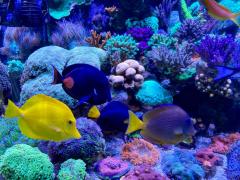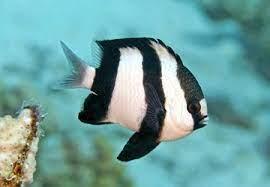-
Posts
758 -
Joined
-
Last visited
-
Days Won
18
Content Type
Profiles
Forums
Gallery
Everything posted by Singapore Reef Club
-
1) Silentlurker, design 1, M, 1 2) Silentlurker, design 2, M, 1 3) Silentlurker, design 3, M, 1 4) heckers, Design 4, kid 24 , 1 5) AppleholicKen, Design 3, S , 1 6) Domvonn , design 3 , XL , 1 7) L0rddracula,design 2,M, 1 8) Alvarogr , design 3, XL, 1 9) Alvarogr , design 4, 28 , 1 10) Zest2night, Design 1, L , 1 11) Zest2night, Design 2, L , 1 12) Reefrap , design 2 ,M , 1 13) LittleNat1, design 2, XS, 1 14) JiaLin99, Design 4, XS, 1
-
1) Silentlurker, design 1, M, 1 2) Silentlurker, design 2, M, 1 3) Silentlurker, design 3, M, 1 4) heckers, Design 4, kid 24 , 1 5) AppleholicKen, Design 3, S , 1 6) Domvonn , design 3 , XL , 1 7) L0rddracula,design 2,M, 1 8) Alvarogr , design 3, XL, 1 9) Alvarogr , design 4, 28 , 1 10) Zest2night, Design 1, L , 1 11) Zest2night, Design 2, L , 1 12) Reefrap , design 2 ,M , 1 13) LittleNat1, design 2, XS, 1
-
1) Silentlurker, design 1, M, 1 2) Silentlurker, design 2, M, 1 3) Silentlurker, design 3, M, 1 4) heckers, Design 4, kid 24 , 1 5) AppleholicKen, Design 3, S , 1 6) Domvonn , design 3 , XL , 1 7) L0rddracula,design 2,M, 1 8) Alvarogr , design 3, XL, 1 9) Alvarogr , design 4, 28 , 1 10) Zest2night, Design 1, L , 1 11) Zest2night, Design 2, L , 1
-
Hi Guys, It has been a long time , since we organize our last round of club T-shirt printing , as we are doing a fund rising event for this year activities, our new range of club T-shirt together with a designer T shirt will be available for order as below; Material ; 100% Cotton Round neck T-Shirt 1) Design 1 ( Adult ) -White ONLY - $ 19.00 2) Design 2 ( ADULT) - Black ONLY - Price ; $ 19.00 3) Design 3 ; Adult SRC Shirt - White ONLY - Price $ 19.00 4 )Design 4 ; SRC Kids T shirt - White ONLY ( PRICE ; $ 17.00 5 )Design 5 ; SRC Adult T shirt - White only - Price : $ 19.00 ( NEWLY ADDED ) For order , please indicate your order format as below ; 1) Nickname , Design No , Size , Quantity For order of more than 1 design, please indicate format as below; ** Example** 1) SRC , Design 1 , M , 1 2) SRC , Design 3, M, 1 3) SRC, Design 4, kid 28 , 1 ** Closing Date ; 03.02.2021 Price include local postage, which will be delivered to you. We will PM you for your address and contact info after the order closing date. Looking forward to your support !
-
Water clarity in a reef tank Hi ,Today I would like to share about the clarity of the water in a reef aquarium, and what may be the causes of it and what we can do to make your water crystal clear. The benefit of a crystal clear tank: Visually happy – Who doesn’t like coming back home and see a crystal clear tank? Better light penetration – Better light absorption by coral ( Higher PAR reading ) due to the clarity of the water. Photographs will look nicer because of clearer water. Check this out below if you want to know some of the tips & Tricks on taking nice photography in a reef tank. To achieve crystal clear water, I will list down some of the factors I observe and share with you on how we can achieve it. Bacteria Bloomed in a new cycling tank is a common cause of cloudy tank. Bacteria Bloom Are you cycling your new tank? Did you recently introduce a new bacteria product into your existing tank? Unknowing to many new reefers, these are some of the common factors that cause a bacteria bloom resulting in a cloudy tank. The reason behind it could happen because the population of the bacteria is not kept under control, or there is an imbalance of the bacteria population. We are always told to turn off the skimmer during dosing of bacteria which is indeed true in some aspect as protein skimming will remove some of the bacteria away, but if you are facing a situation of a cloudy tank due to bacteria bloom, it is best to run your skimmer to remove the excess bacteria film in the water. Luckily, a cloudy tank due to bacteria bloom is not a major concern, as most of the time it will clear up by itself over time. However, in some instances, the bacteria bloom could result in a drop of oxygen level in a reef tank, so do make sure that you keep your skimmer running and provide additional air/surface circulation if necessary. Common Causes of cloudy tank Bacteria bloom Introducing too much bioload (livestock) at once Overfeeding Overdose of bacteria products Dead livestock decay in the tank. Stirring of sand Heavy bioload – too many fishes Overdose of supplements UV is one of the commonly used equipment to keep water clear ( Image ; aqua ultraviolet ) What to do if the tank doesn’t clear over time ? If in the event that the cloudiness does not clear over time, you could consider running an Ultra violet steriliser, ozone, or even use some commercially available supplement products in the market that can help to clear up a cloudy tank. Glass Little did we know that the quality of the glass can actually affect the visual appearance of the live stock / coral that we see in the tank as well. The clarity of the glass is affected by ; Algae on the glass – This is a common problem all reefers has to go through, as algae film growing on the glass will affect the visibility of the tank overall. So do remember to get a good aquarium glass cleaner and clean your glass regularly! I Different grade of glass actually affects the clarity of your tank – Picture from Aquarium artist showing the difference between crystal glass and normal glass. The bottom one is crystal glass. 2. Quality of the glass – Another important factor that affects the clarity of the tank we see is actually the quality of the glass itself. Do you know that there are actually different grade/types of glass being used for making a fish tank ? If you choose to use normal glasses, your livestock in your tank will tend to look greener due to the green layer found in a normal glass. However, If you choose crystal glasses, it will look much clearer and less greenish look. Remember the time when you look at the coral from the top of your tank ? Does it appear different from the glass itself? Another factor is that the thickness of the glasses also come into play of the clarity as well, as the thicker the glass it is, the more greenish it will appear on the normal glass. However, don’t go for a thinner glass just because you wanted to look nice, but a thinner glass will also mean higher pressure load from the water inside, so do remember to discuss with your tank maker about it to select the corect glass thickness to use. Algae in water column Like bacteria bloom, the concentrated nutrient in the water column could result in algae bloom which will also likely cause the water to be cloudy in fact green. This often happens when you have very high nutrient level without controlling it. Here are some of the causes of Algae Bloom High Nutrient in tank Overfeeding Large water changes of unknown water source Lighting in the wrong spectrum (example using plant light) Overexposure to direct sunlight on tank Biopellets and Rowaphos are one of the commonly use P04 and N03 removal products to control nutrient in a reef tank. A possible solution for this includes doing a major water change, controlling your nutrient level by using phosphate and nitrate removal, installing a UV steriliser, running an ozoniser , setting up a refugium, algae reactor or ATS to keep the nutrient in check. Phosphate can be easily removed with media like ROWAPHOS. Do take note that it work too effectively to remove phosphate therefore it always recommended starting with a small dose. And nitrate can be remove by using products like bio pellets etc.. Other factors that might contribute to a cloudy tank Overdosing of supplement – Some supplement like Kalkwasser, KH or calcium if is overdose can cause your tank to turn cloudy, so remember to perform a smaller dose separately. Dosing of supplement that you didn’t know of – Not knowing what you dose is another clear factor of a cloudy tank, and it might even cause causality for your corals or fishes. Here are some of the solution you can have in place to make your water crystal clear. Improving your mechanical filtration A product like the ClariSea SK-3000 Atomatic(GEN2), is a great way to remove fine particles from your water column. Picture from https://reefmarketsg.com.sg/product/clarisea-sk-3000-atomaticgen2/ Old school reefer like me uses filter floss as it is cheap to be disposed of. However, the new age roller filter provide micron size filter matt filteration which allow both small and big particles to be filter away while automatically turning to a new layer of matt once it get dirty. How easy it that ! Running Active Carbon To maintain crystal clear water, another option is to run active carbon. Active carbon or Activated Carbon is considered a form of chemical filtration. It works by absorbing toxic waste and fine particles from the water column, however, once all it’s pores are filled, it needs to be replaced. If I happen to miss out on any good options, hit me up and I will research it and put it in this article to share with our reefers. Supplements that help improve water clarity There is numerous product in the market that make claims to make the water clearer, personally I have try a few of them and most of them involving introducing another source of bacteria to clear the water. Microbe-lift special blend is one of the bacteria that reduce your nutrient in water by consuming nitrate. Vibrant from UWC Vibrant, “Vibrant is a new revolutionary liquid aquarium cleaner. You can say goodbye to algae, cloudy water and that grungy, dirty aquarium and say hello to that sparkling, crystal clear, algae free, vibrant aquarium you have always wanted! 8 oz. bottle will treat 2,400 total gallons.” directly quoted from the manufacturer. Personally I’ve use this product however it stop my cheato from growing which isn’t what I want. It indeed help my water to be clearer and reduce algae growing on glass. SPECIAL MENTION: MICRO BUBBLE IN TANK Another common issue that reefer often face is microbubble in their tank. If you’re not careful with configuring your setup, you will see micro bubble tend to form in your tank which affects the clarity of the water. What are often the causes of this? Return department in sump too low, return pump suction air too when going into the main tank. The wrong configuration of the skimmer, resulting in microbubble escaping the skimmer and entering your return pump. Wavemaker placing to high, absorbing air along with water causing microbubbles. Poor sump design – micro bubble forming in sump compartment. PS: Clean your lens before taking a picture too, your tank will look clearer that way! Author @Willy Guccivera Yap
-
From the album: SRC FTS Collection
-
From the album: SRC FTS Collection
-
From the album: SRC FTS Collection
-
From the album: SRC FTS Collection
-
From the album: SRC FTS Collection
-
From the album: SRC FTS Collection
-
Starting your first marine tank. Overview to plan your equipment and budget (Part 1) Starting a beautiful marine tank is exciting. But upon doing research online, the information may be overwhelming, contradicting & often confusing. This guide aims to provide a high level overview of areas to consider when embarking on the reefing journey. To help you make educated choices in planning & purchasing the right equipment. Most of the article will refer to a reef tank. General planning : What do you want to keep? The most popular set up is a reef tank – a mix of both fish & corals. And when it comes to corals, there are options of LPS (Large Polyp Stony Corals), SPS (Small Polyp Stony Corals) and softies. In general, LPS & softies are easier & less demanding than SPS. LPS are more tolerant of imperfect water conditions, require less flow & less light. On the other hand, SPS demand pristine water conditions, strong flow & very strong light. These affect your equipment choice. Left : Small Polyp Stony Coral (SPS), Right : Large Polyp Stony Coral (LPS) Another popular setup is a fish only system with no corals – commonly abbreviated as FOWLR (Fish Only With Live Rocks). For example, beautiful fish like Angelfish eat fleshy corals & nip on SPS are best kept in FOWLR systems. Less common is a species tank, where certain species have specific requirements. For example, seahorses are weak swimmers and require very low flow in the tank. They are compatible with most soft corals and gorgonians. You must avoid any stony corals that have a strong sting as this often leads to injury & infection. AIO (All in One) tanks. These are usually smaller setups ranging from 10L to 300L. The compartment to place small filtration equipment & bio media are at the back of the tank. AIO tanks are great for reefers with limited space or those starting out to learn the ropes. Display tank with sump (Recommended set up for marine tanks). A sump is an additional tank usually below the main display tank where equipment and additional filtration capabilities can be enabled. You can have proper mechanical filtration, large skimmer, more biological media and multiple media reactors. A sump allows easy access to the filter & equipment which makes maintenance easier which typically leads to a more successful tank. The dedicated cabinet helps hide the sump & clutter of containers & equipment For both the AIO and Tank/Sump options, you can choose from purchasing ready made system, or to have them custom designed. Ready made tanks have the necessary components included and are more straight forward to set up. Custom made tanks offer options such as tank size, glass type, overflow, piping & cabinet customization. Approach your local fish shop for further advice. Simple bare tanks (not recommended for a marine reef aquarium). There are some who covert their simple & bare freshwater tanks to saltwater. And attempt to re-use the tank by using canister filters or hang on back filters. Such setups are not recommended as the filtration is not adequate. Using an external canister filter is troublesome & will result in neglect & possible failure. On the other hand, a simple bare tank is adequate as a short term quarantine/hospital tank. Equipment Once you have decided on the tank type, start planning for some other equipment. Namely : Return pumps Return pumps move water from the sump or IOS compartment back to the main display section. The 2 main types are DC (Direct Current) & AC (Alternating Current) pumps. DC pumps allows adjustable pump speed but are more expensive than AC pumps. DC pumps are useful if you plan to T-off the return pump for reactors & chillers. As you add more equipment, you can adjust the pump speed accordingly. DC pumps. Example of how T-off piping to feed various reactors AC pumps have fixed speeds. You need to purchase the right size for your needs. Various sizes of AC pumps Turnover rate from sump to display tank of about 4x is sufficient. For example, for a 500L tank, a return pump speed of 2000l/hr (liters per hour) is sufficient. Note the advertised flow rate on the box depicts maximum flow of a pump (no pipe restrictions or height pressure losses). In a tank system, pipe restrictions (bends, elbows & valves) slow the flow rate down. A general rule of thumb is to assume it slows the pump flow rate by half. If you T-off the water flow (i.e. feed water to other equipment as well), then pick an even higher rated pump accordingly. With a DC pump, you can easily reduce the power & flow rate. Wavemakers & Flow Flow is important for a healthy reef tank to bring oxygen & food to the corals. Most popular wavemakers allow adjustable propeller speed & duration. The goal is to create pulses & random flow patterns in the tank, just like in the ocean. Size the wavemakers correctly for your tank size. Do not place them directly in front of corals as the continuous direct flow will damage coral tissue. Larger tanks will require more wavemakers for better coverage. Some higher end wavemakers have the motor outside the tank and magnetically coupled to the propeller/wet side inside the tank. This unique feature with 2 key advantages Motor heat is not absorbed by the water. Allows the wet side be removed easily for cleaning. Gyre pump blades Another popular design are gyre pumps which use a different style fan blade to produce wide laminar flows. You will need fewer wavamakers in a tank with these since they cover a wider flow width. The downside is these pumps tend to be more troublesome to clean Lights The 2 common light options are T5 & LEDs. T5 provide a blanket of diffused light to the entire tank so there is less shadowing of corals. You can configure it with different light tube types (colour temperature). While T5 fixtures have lower up front cost, the T5 tubes should be replaced every 9-12 months – they deteriorate & become less bright. ATI Sunpower T5 light fixture LED light fixtures are the more popular choice these days. While they may have slightly higher initial cost, a good LED set should last many years. LEDs are extremely efficient and can produce a lot of light and less heat compared to T5. You have the flexibility to tune the light to simulate sunrise, daylight & sunset. Or tune the spectrum based on personal preference or to the type of corals kept. Depending on the tank size, rock scape & type of corals kept, you may need multiple sets of LED fixtures to provide sufficient light energy for the corals to thrive – similar to the energy they receive from the sun. LED lights are typically mounted about 30cm from the water surface level. This should provide good light spread & not have hotspots (areas of concentrated light which can burn corals) PAR (Photosynthetically active radiation) is measure of the amount of light available for photosynthesis. Corals, clams & other animals originate from different depths of the ocean and have different PAR requirements. In general SPS need more PAR. Conversely LPS require less PAR. Having too strong light can also cause corals to bleach & die. Measuring the PAR levels using a PAR meter takes away the guess work of coral placement. Ask around the reefing community to loan or rent one. Lighting period The general guideline is to have about 6-8 hours of bright light for the corals to photosynthesize. It is common to have a few hours of bluish light at night to enjoy the beautiful glow of the corals. This is more of an individual preference. Below is an example of a light profile. Example of settings for Aqua Illumination Hydra lights Filtration There are 3 main types of filtration – Mechanical, Biological & Chemical. Mechanical filtration is the use of physical media or equipment to trap solid particles from the water. These are often placed in the 1st stage of the sump or IOS filter system to trap large particles before they clog the pores of biological filtration media. Key points : Filter wool comes in pre-cut sheets or long rolls Filter wool. Made of synthetic material. A cheap & convenient option. Use & discard Filter socks Filter sock. More elegant solution but more costly. Socks are made of nylon or felt. Nylon socks are easier to wash under the tap but has less filtering capacity compared to felt socks. Felt filter socks are quite inconvenient to flip & wash thoroughly. Sock pore size are typically in the 200-300 micron range. Clarisea SK 5000 Filter rollers. These automatic filters use a thin sheet of filter material (known as fleece) to capture dirt. A motor advances the filter material automatically when clogged. By removing food/dirt quickly from the water, filter rollers ensures minimal decay & contamination of the water. Fleece pore size are in the 25-50 micron range. A roll of fleece should last about 1.5-3 months Protein Skimmer is also another form of mechanical filtration. Often placed after the initial filter wool/sock/fleece. A skimmer uses a needle wheel pump to generate large amount of fine bubbles. This causes organic waste (fish food, fish waste & suspended particles) to stick to the surface of the bubbles which bursts when it reaches the top of skimmer. The splattered waste then flows into the collection cup. Having a good protein skimmer results in cleaner water & less frequent water changes. Protein skimmers have a secondary advantage of improving gas exchange & increasing the oxygen content of the water due to the bubbles it forms. Biological filtration refers to the use of bacteria in the tank to break down dangerous ammonia to less toxic nitrite & nitrates; commonly known as the nitrogen cycle. A term often mentioned in articles is ‘live rocks’ – this refers to a rock where bacteria reside. Current trend is to have minimal rocks in the display tank so that there is more space for corals & fish to swim, and the supplement with additional biological media (eg. ceramic balls, cylinder or blocks) in the IOS or sump to increase the surface area/population of this beneficial bacteria. Place loose media in a mesh bag or basket for easy removal for the occasional quick rinse with old tank water. Chemical filtration is a way to removed dissolved particulates using activated carbon, resins or other absorbent media. Resins for absorbing phosphates Activated carbon to remove toxins/clarify water. Measuring the right amount of media to place in a reactor. Chemical filtration media are best placed in a reactor to enable sufficient contact time between water & media for the reaction to take place. A less effective but acceptable alternative is to put the media in a mesh bag placed in a high flow area. Cooling Given the warm ambient temperatures here in Singapore, there is a need to cool the water to the 26-28 degree Celsius range. Cooling Fan. For those on a budget & smaller tanks, you can get away with a cooling fan blowing on the water surface. With this method, evaporation rates increase & you must have a good auto top up system to replenish the evaporated water quickly. Else, water parameters (eg salinity) will have big swings which is bad for livestock. TEC (Thermo Electric Chiller). An alternative for very small tanks (10-30L range) is a mini chiller using Peltier cooling technology. Such mini chillers are not very energy efficient (about 5% of electrical energy is used for cooling). They have a typical equipment life of 2-3 years. Chiller. A more energy efficient option is the refrigerant type chillers. Select one that is correctly sized for your tank. Electricity cost is not too high. One example of usage for a 1/4hp (~440 watts) chiller running 20min to chill. Turns on once every 3hrs to maintain a tank between 27-28degC. Based on rough calculation, this works out to SGD $0.21 per day. Or SGD $6.40 per month. For larger 4ft & larger tanks, it is common to use an non-invertor air con compressor with cooling coil. The compressor is best placed outside the house so the hot air goes is blown away. If this is not possible, it is also possible to place the compressor next to the aquarium. Compressors are extremely efficient & cools the tank fairly quickly. For example, a 4ft tank may take about 20min to cool and turns on once every 3 hours. 1HP non-invertor compressor unit & titanium drop in coil Auto Top off Water will naturally evaporate from the aquarium. Evaporation rates can be much higher when using a fan to cool the tank. As we are dealing with saltwater, only the water component evaporates (the salt remains). Salinity increases if no fresh water is added and leads to unstable water parameters. An Auto Top Off (ATO) is a device that detects the water level in the tank or sump. If it is too low, it then triggers a pump to top up fresh water from a reservoir back in. Take note the ATO should be using water only & not salt water (since only the water component evaporates) ….. to be continued in Part 2 Author - @SubzeroLT
-
Top 10 common mistakes newbies make when starting up a marine tank. People study other people’s past so they won’t make the same mistake, that is why we call it his story. (Get the puns?… ok fine sorry). Anyway here are the TOP 10 mistakes newbies make when starting up a marine tank. Number 10: Jumping into the hobby without research. When people start to get interested in the hobby, some people tend to try to save money on the equipment they use and at the same time, they don’t do any research on what they are buying. Of course, a piece of better quality equipment will definitely be more pricey than a cheaper one. For example, using a cooling fan to chill off the aquarium instead of running a more expensive chiller not knowing that it actually cause issues such as accelerated evaporation and sudden change in salinity which actually cause more work to maintain those level. And due to this, they might actually end up upgrading their equipment and spending more to getting a chiller later on. Another example for which some people tend to buy fishes or corals without learning their compatibility and care level and finding out later that they cannot take care of it well eventually causing livestock suffering or even death. Which finally, they might find themselves giving up on the hobby or they will finally decide to do some research to learn about it. (We have a SRC forum for you to do your research on!) Be a responsible reef keeper and know what you are buying and able to care for it before your next purchase! A refractometer is a more common means of salinity measurement in the hobby Another example is the wrong equipment choice (could be a budget-related concern ) but might find himself ended up with terrible equipment choices not suitable for his/her tank system. For Example, getting a cheaper Swing arm hydrometer comparing to a refractometer to measure salinity which is less accurate. Or buying an optical refractometer from online shops without first checking and knowing that it is not meant for other purposes rather than for the saltwater aquarium (eg for beer-making) . To summaries, selection of equipment base on suitability is more important than solely on prices alone only. Picture showing tank cycling process. Number 9: Skipping the cycling process / Adding livestock before cycling process is complete Very understandable – we are all anxious to see our new tanks come to life when we get our new marine tank setup . Well, it is a mistake that was even made by me in the past. We tend to think after spending hundreds of dollars on equipment, it definitely makes keeping marine life easier. WRONG. Tank Cycling is still a must regardless of how much a product says it can cut off its cycling time. So what can we do to know cycling is done? With water testing, we can be able to test our water to see if the tank cycling process has been completed anot. In that case when ammonia ( NH4) and nitrite (N02) is zero. Your tank is ready to introduce your first guest into your new tank! Number 8: Not doing water change. Water change is tiring and it could be a huge hassle for some, however as time goes by, nutrients in your tank will build up and elements like calcium, magnesium, trace element and etc will deplete too. The best way to maintain your tank is doing a regular partial water change. Not only do you reduce the nutrient, you also replenish the element that is depleted in the system. You still need to test your water and top up elements that are low. Number 7: Adding more fishes than your system can handle Well if you google it will show the Rule of Thumb which means The short “Rule of Thumb” answer generally accepted in the marine aquarium hobby is: “One inch of fish (measured from the nose to the base of the tail) per 5 gallons (20L) of system saltwater. However, it also depends on the species of your fishes and how big is your tank is. Don’t be afraid to always post online to ask about the care level of that particular fish. As for this article, I’ll recommend to always monitor your ammonia and Nitrite level ( Which is toxic to fish ) as well as your nutrient level ( Mainly Nitrate & Phosphate ). Number 6: Cleaning the sand bed. Having Sandbed in a reef tank is a beautiful addition in a marine tank, however, if you decided to have a sandbed but not taking care of it could actually cause more harm than good. For a shallow sandbed, it is advisable to do some vacuuming to remove any debris or leftover fish food on the sand surface to prevent any debris from building up. However, if you have a deep sand bed ( DSB ) , it might not be a good thing to stir the sand bed to prevent any disruption to the biological filtration function of it. Alternatively, it is good to have some cleaning crew like the tiger nassarius snails, and sand shifting star etc to helps keep the sandbed clean… Number 5: Not acclimating newly bought livestock into tank. If you ever bought healthy livestock and decided to throw it in the tank thinking everything will be ok, you could be wrong. There could be a great variant of water parameter and temperature differences between the water at the live fish shop store and your tank. The sudden shift in water parameter if you did not acclimatize your newly bought fish/coral correctly will stress the corals which could result in the death of the newly purchased livestock. Acclimating simple mean adjusting the water parameter for example temperature, PH, and salinity etc of the water between the new and the old to avoid any sudden shift. This should be done in a slow manner to allow the new fish to adapt to the new water parameter without causing any stress to the new livestock. Be sure to check on the fish compatibility before the introduction of the new livestock, and check out on our detail fish acclimating guide. Photo showing fishes in an LFS (ABA) that are going through quarantine or medical treatment process. Number 6: Adding fish without proper quarantine. Quarantine simply means to isolate all new livestock that has arrived from another location that may have been exposed to infectious or contagious disease/parasites, before introducing it into the current system to prevent any form of diseases spreading to existing healthy fishes in the system. The quarantine period is typically 2-4 weeks to observe if the newly purchased fish shows any signs of illness or disease and make any treatment if necessary in an isolated tank before introducing it into the main display tank. You can read about setting up a simple Quarantine system here Fish might appear to be well-fed and actively swimming in a fish shop. Even though it went through quarantine in the fish shop, it is surely a good practice to do our own diligence to do our own quarantine as well to prevent any chance of diseases introduction into our existing system. With a proper quarantine system in place, you will not risk risking your existing healthy livestock when you are adding any new fish or corals. Coral are going through dipping to remove unwanted pests. Number 7: Not dipping your newly bought corals. If you think that you are ONLY adding your new coral into your new system every time you purchase a new coral. You might be WRONG, hitchhiker like coral Pest could be hidden inside your coral without you knowing it, and these hitchhikers could be invisible to our naked eye. These coral pests could also be buried inside the rock that came with it, and the only way you can actually stop them from introducing into your tank is to perform a coral dip. After performing a corals dip, you will reduce the risk of introducing any form of the coral pest into your system that could have devasting effects. Number 8: Adding salt directly into your tank without mixing or testing. Well well, if you happen to make this mistake, that’s something to learn from. Introducing salt directly to an established tank system which might contain an undissolved component which not only giving you a false salinity reading but might cause other sudden parameter shift as well ( Example, sudden calcium, KH, increase ). Not only that, you might unintentionally raise more salinity, than needed without testing the salinity in the first place. The sudden increase in salinity could have a serious effect on the livestock in your system. So be sure to always mix it separately in a pail first, and testing the salinity after all salt is fully dissolved before trying to increase the salinity of your existing system. Number 9: Not performing regular water testing on your water parameter. Wow, my corals are so beautifully open and fishes are eating aggressively (too hungry?) Joke aside. Doesn’t it really mean that everything in the tank is good? If you decided not to perform your regular water parameter testing regularly and dosing and topping up the elements blindly, you might actually find yourself overdosing certain elements and causing harm to your livestock then actually helping it. Without performing a regular water testing, you will not be able to tell and replenish any loss or drop of the element to the optimal level for a thriving reef tank to be healthy. Take my advice and schedule to do a regular test . Let us have a beautiful marine tank. Tangs are aggressive territorial fishes and are to introduce together. Number 10: Adding fishes without doing a properly research I believe many new reefers has suffered this mistake of happily buying a beautiful fish during one of the trips to a local LFS before making any research or asking the store owner about its care requirement. Which for an example is the bicolour dottyback. As beautiful it is like a royal gramma, however, due to the fish behaviour nature, once introduced into your tank, it’s aggressive nature may attack any smaller or weaker fish that comes to its path which causing it to die. What is next? New fish lose their appetite and die from stress? From broken fins to death? As previously mentioned, always Always ALWAYS research on the species before purchasing. Get the smaller to bigger fish so it won’t bully the bigger one when introducing the latter. And ya avoid buying a fish if you do not know it feeding requirement and behaviour. Thank you all for reading my articles. If you want more, hit the like button. If there are any more articles you want me to write about, comment down below! Author - @Willy Guccivera Yap
-
Why should we Dip corals? and how to perform it A colourful SSC Visiting a local Live Fish Shop (LFS) and shopping for corals is one of the best enjoyment in this hobby. However, do you know that if your newly purchased coral is not treated carefully, it could cause a serious effect on your existing healthy corals which is already thriving in your current marine aquarium system ? What is coral dipping ? As up to 90% of the corals in this hobby is either collected from the wild or cultured in the sea, there is a high possibility that the corals come with pest without the exporter or importer knowing it. The term coral pest simply means, invert or creature in the natural environment that hosts and eats coral polyps, coral zooxanthellae for its survival, and if left uncontrolled, it will keep reproducing itself which could cause a serious effect on all your corals in the tank. However, most of the time, it is hard to detect these hitchhikers , as due to their natural defence mechanism, that includes natural camouflage which makes spotting them extremely difficult with our human naked eyes. Photo credit; Leon tan Therefore, treating all new or infested corals with a coral dipping is one of the best remedies for this . Coral dipping simply means treating the coral with a commercially available solution that helps to remove those pests from the corals itself without harming the corals. However, do note that coral dip could be effective against the pest itself, but it can be useless against their eggs. How to perform a coral dip? To prevent any unwanted pests getting into your system and eating up all your existing prized corals, we should treat all newly purchased corals “ unsafe “ unless it has passed the quarantine period or safety period deemed by the hobbyist. Start with preparing two container filled with tank water and applying a moderate amount of coral dip solution in the dipping container and placing the corals into the container. Two container of water for dip and wash Dipping of corals in a prepared dip solution Follow the instruction of the coral dip products that you are using, and after performing the dip, transfer it to a newly prepared tank water ( Without the coral dip solution ) for a short bath before finally returning it to the tank. Some of the possible hitch hiker like this that can be found after the dip If any pest is found, do prepare to perform a second and a third dip a few days later as there might be eggs present that need to be redipped for any pest. Do not dip the same coral repeatedly as it might stress the corals and cause it to die from stress. Provide enough rest period for the coral to heal before performing a repeat coral dip again. Performing coral dip on mushroom corals However, if no sign of pests is present it might not mean that the newly purchased coral is 100% pest-free, as there might be eggs which are not visible to our naked eye or which has not been hatched during the coral dip that we have done. The dip will not be able to remove eggs, and it has to be done only manually. Which is also why It is strongly recommended to place all newly purchased corals into a separated quarantine system which a schedule dip can be performed over a period of up to 14 – 30 days which ensures that the coral entering the system will be 100% pest-free. If there are any eggs which are not hatched, it will hatch during this quarantine period, and the scheduled coral dip will remove them completely. SPS coral turning pale due to FW attack A infected colony that losses its color SPS with flatworm SPS infected with FW eggs So be prepared for every new coral, be it mariculture piece or coral frag big or small, there is every possibility of introducing a bad hitchhiker into your system which could cause a nightmare to you trying to figure out how to remove them later from your tank. A Possible schedule of a coral dipping process for all newly bought corals includes ; Day 1 – Coral dip and inspect visually for any sign of bite mark, pest, eggs on the corals itself or on the base of the rock that it comes with. ( Depending on the condition of the corals itself, if the coral look stress, or injure it is advisable to postpone this to further stress the coral ) Day 7 – A second coral dip to ensure that there is no coral pest observe during the dip Day 11 – Hitchhiker pests like AEFW ( Acro Eating Flatworm ) take about 11 to 14 days to hatch depending on the temperature, thus by the period this third dip is performed, the eggs would have hatched and dropped off from this third dipping. Day 14 – The purpose of this dip is to ensure that all unhatched eggs from the previous treatment will be by then hatched, and removed by the dipping process performed on this day. Day 30 – Finally the last coral dip is almost certain that all coral entering the main display tank is free of any coral pest and safely introduced into the system. A tank full of happy growing corals. Yes, this could be a very tremendous tedious process of dipping and conditioning the corals to be almost 100% sure that all corals entering your system are almost certainly pest free. However, the effort will be worthwhile over the long run, preventing any outbreak in your existing system which could lead to a total loss of your beloved corals or a more tedious way to remove them later. Author - @he
-
Avoid these fishes! YES, Avoid these fishes! Here today we will discuss the most popular fish in the trade to be avoided. Given the beautiful color or the fish or perhaps the cheap price, you should always research and prepare for it as the fishes listed might be difficult to keep or difficult to get it fed. One of the most sough after fish ( Achilles Tang ) which belong to Acanthurus family is very susceptible to ich and require good water quality and large swimming space Ich Magnet Tangs are one of the obvious ich magnets, by saying ich magnets means they are easily susceptible to ich. One of the genus to avoid are Acanthurus which consist of Powder Blue, Powder Brown, Powder Black and Archillis tang are the most common fish to be seen in trade and also most susceptible to disease in a Reef Tank. It is not totally impossible to keep this species however you are required to quarantine every single fish that enters your tank from the start and also prepare to dip anything that enters it too because this is to lower the risk of diseases entering your tank. However, it still doesn’t 100% eliminate the chance of this fish getting caught with ich or die. One way to ensure your fish to be healthy and resistant is to feed them well to build up their resistance and ensure fish is fully quarantined before introducing it to your marine tank. Do also take note of the existing tank mate in your system as if it is not properly introduced, they might be aggressive towards each other and being bullied by established fish in the system which might weaken their immune system making them susceptible to develop ich again. Tangs also required amber swimming space and it is only recommended for reefer with 3ft tank and above. Damselfish Affordable, elegant and beautiful as it seems to be, however so note that some of the damsel species are notoriously aggressive fishes to other tank mates, that will attack another tank mate once it is established. If you really like this species you should consider introducing it last (Which maybe seem impossible because we always want to add new stuff), or introduce a bigger size fish after it. Be sure to research on the behaviour of the damselfish that you will be getting to avoid any aggression. Damselfish might do well in a school in the ocean but however, in a small tank, they often chase and bully themself to death as victims of the bullied may find themself hiding and die from starvation. Copperband butterfly Even myself, I love the beautiful white and yellow colours and also the long peck. However, do note that this fish diet is only known to eat copepods and aiptasia. You can train them to eat Mysis shrimp but it will require a lot of patience for that. Impossible to keep? No. But it has really come to how much commitment you can keep this fish with some stroke of luck as well. Once you are able to obtain a healthy specimen, the chance of getting it to feed prepared food will be higher, and you will be rewarded with a beautiful specimen swimming in your tank. Dragonet (Mandarin fish ) Same as a copperband butterfly, their diets in the wild consist only of live copepods and pods that are small enough to enter their mouth. It should only be kept in an established tank with lots of critters for them to hunt in the while. If you keep in a small tank, train them to eat mysis in a small isolation before release or else they will just ignore the food as they are never going to try to nibble on it unless in a confined area. Weird huh. Fortunately, there are captive breed specimen that is ready train to feed prepared food even pellets as well! However, do prepare to pay a little bit more for these captive breed one. Bicolor Dottyback Small yet aggressive. Dottyback is one of the most common fishes in the marine trade that newbies tend to purchase because they look like Royal Gramma from finding nemo. This fish may look gentle and harmless but do not be deceived by its looks, as once settled, they are really really really aggressive in their own space and always tends to bully new tank mates to death. I would totally avoid this fish but then if you really like this fish, do consider introducing it as the last fish without its own kind/body shape with ample swimming space for it. Pygoplites diacanthus – Regal angelfish is consider one of the harder angel fish getting it to feed prepared food in an aquarium environment. Most eat sponge in the wild. Picky eater Angelfish Some angelfish are picky eaters and it could be challenging getting them to eat prepared food in the captive aquarium, as some of their natural diets in the wild usually consist of a wide variety of sponge. Some species not limited to are Regal Angelfish, Multibar Angelfish and Golden Angelfish are the few of the beautiful angelfish that are often reported hard getting them to eat in a captive environment, which often ends up being dead from starvation. I will only recommend to purchase them if they are eating pellet in a LFS or show sign of feeding . PS: Do find out what pellet brand it is eating and get them to mix with what you feeding with. Lastly, other than avoiding the fish, you should also learn about how to pick a healthy fish which I will write on it next time. If you have more fish you wish to bring to attention to avoid, do write on the comment below. Author - @Willy Guccivera Yap
-
Starting your first marine tank. Overview to plan your equipment and budget (Part 2) This is a continuation of a 2 part series. Saltwater The ideal situation is to start the salt mix with the cleanest possible water. RODI (Reverse Osmosis De-Ionize) filters produce pure water by deploying a series of filters to remove sediments, chlorine and other contaminants such as copper, chromium, ammonia, nitrate & phosphorous that may be present in tap water. A typical RODI system consists of A polyester filter to remove sediments 2 carbon blocks to remove chlorine & other contaminants Reverse Osmosis (RO) membrane that performs the majority of filtration, followed by de-ionisation (DI) resin to remove the remaining dissolved solids. The ultimate goal is to produce 0 TDS (Total Dissolved Solids). Measure this with a handled or in-line TDS meter. While the RODI filter may seem expensive, the convenience will pay off in the long term. RODI system will generate some waste water (that’s how the RO filter works). Some reefers collect the waste water to be re-purposed (laundry, washing floor). RODI systems need at least 50psi water pressure to operate efficiently (i.e. able to push water through the RO membrane). Generally higher pressure will result with less waste water. If your home does not have such high pressure, then an additional water pressure booster pump needs to be installed. Hot tip : If you live in a high rise apartment, collect water late at night or very early in the morning. Water pressure tend to be higher (because there are less people using water) For smaller tanks that do not need much water, a more economical option is to use an DI filter which skips the reverse osmosis (RO) membrane. It is possible to use tap water with anti-chlorine. However, there is a chance of letting contaminants slip through – possibly leading to algae growth or coral/fish health issues. Salt mix You make saltwater by mixing RODI with aquarium salt. Some brands are made from evaporated sea waters while others are synthetic. Both are good. For reef tanks, prepare your salt mix in a large container or water drum to a salinity of 35PPT (parts per thousand) or 1.026SG (specific gravity). There is a misconception that the ideal salinity is 1.025SG. The general accepted natural sea water salinity is 35PPT. For fish only tanks, it is OK to use 30.5ppt or 1.023SG Salinity is best measured with an optical refractometer. NEVER use a swing arm hydrometer as they are extremely inaccurate. Key parameters & testing It is important to test your water parameters weekly to ensure the well being of your livestock. Fluctuations will result in nuisance algae, cyanobacteria bloom & even fish death. With testing, you will know which parameter has drifted & be able to quickly adjust it back. Similarly, by testing the water, you ensure your dosing regime is done correctly. Experienced reefers may get away with not testing their waters since they may have their processes dialled in. But for new reefers & new tank setup, best practice to test weekly (or even more often for a start). Home test kits are available for the parameters highlighted in bold blue font below. Column in green shows the target for my own tank. Trace elements and heavy metal contaminants that cannot be detected with home hobby test kits. Once you have set up the tank and settled into a dosing routine, consider going into the next level of testing by sending your water for external ICP (Inductively Coupled Plasma) testing. LFS organise water collection occasionally. Depending on the brand, these typically costs between S$60-S$120 per test. Additives Sufficient water change can be done to replenish depleted elements. Water change alone may be possible for small tanks but impractical for larger ones. Hence, adding back elements such as Calcium, Magnesium & Alkalinity can be done using a dosing pump or a calcium reactor. If you have corals, you should also add trace elements (needed for biological cell function) and amino acids (building blocks of protein needed by animals) There are many additive products and brands in the market. Do not be tempted to try too many products as some may have overlapping effects. When dosing a new product, take the conservative approach to dose half the recommended amount first. Monitor & adjust the dose accordingly. Tank maintenance requirements Water change is a way to reduce nutrients (nitrates, phosphates, waste) by diluting it with clean water. Water change also replenishes depleted elements. A general guideline is to change 20% of water every 1-2 weeks. It is a good idea to siphon the sand bed during water change to get rid of trapped detritus. Clean the glass. A healthy tank will have some bio film & algae growth on the tank after a few days. Magnet scrapers are popular. Be careful not to get sand trapped between the cleaner & the tank glass/acrylic as this can scratch the glass. Some have magnetic blade attachments which is an efficient way to scrape off stubborn algae. Hand held scrapers are good for hard to reach areas and close to the sand bed. Do not apply excessive uneven pressure when using hand held scrapers as they tend to scratch glass easily. If you have an acrylic tank, use only cleaners with a soft cleaning pad. Metal blades will scratch acrylic. Cycling & adding livestock Once the tank is set up, cycle the tank with bacteria additives. This takes about 4-6 weeks to complete. After which you can start to add livestock slowly. Read up about care requirements & whether your aquarium set up is ready or suitable for it. Key points : Marine fish can be territorial & aggressive towards fish of similar species, shape or color. Some are just bullies to everything else Aggression often lead to injuries, stress & often death. Check compatibility Corals of the same family in general will not sting each other. Corals can be aggressive & sting corals of other species. Some fish or invertebrates eat corals. Author - @SubzeroLT
-
Custom Tank or ready-made? Hi everyone, today I’ll be sharing my own unique short experience about building a custom tank compared to a ready make tank, and hopefully, it will help someone decide on their next project. To be frank, I would strongly advise to only go for a customize tank build, if you have experience with setting up a marine aquarium before with some experience of the problem and issue of your last build and have also done some research of your own before deciding to go into this route. There are many reasons for this statement however I’ll drop the pros and cons below for you to compare. PROS Custom size to fit in your space. You can choose to be as tall as you if you want, or a customize size to fit a unique corner in your house. Enable customization and your own design of the Sump for your equipment. Able to choose your own color, wood, lamination , piping and types of glass of the tank and many more depending on what you want. Limitless potential depends on how you want to design. Able to design where the overflow is. (Bean Animal, Corner, Center, etc… Able to expand your creativity allows you to proudly show off your idea. Price could be cheaper in my opinion, comparing to a branded ready make setup. CONS If a non-Standize size tank is made, there could be an issue of finding the suitable equipment for it, i.e; light and stand come in standardise size in 2ft,3ft and 4ft etc.. Risk of water overflow from the system if we design the system ourselves without planning for any emergency siphon break ect, however, this can be solved if the tank makers is experienced on this. It could be Harder to sell the tank away in the event of decommissioning of your existing tank, as custom size only fit in your own SPACE and maybe not other people’s house. Longer waiting time/duration to receive the tank, as a customize project will generally require more time to build the tank comparing to a ready-made one. Enough said! Now I will personally show you how I built my own custom tank! I’ve engaged with Aquarium Artist to build my tank because of the consistency of the integrity of the tank (Especially the piping because it is removable and won’t leak!) Why don’t we go through with steps so it will be easier to understand. The excitement of moving into a new house, and finding a suitable area for my new tank. Step 1 : Choosing a location / Planning stage. I’ve decided the location of my new build to be a partition between my living room and my dining table. Most importantly, the selected location must have enough power point to cater for the numbers of equipment that I will be using. Although it blocks the view of the TV, the tank is the VIEW too! I personally find that it will also look nicer as it connects the corridor together and whenever i return back to my home, I would be greeted by the view of my beloved tank t. Brillant! Finding the right space and measurement required some skills. Step 2: Measurement. Plan out your desired size of the tank you wish to have. Invite the tank maker to your house to double confirm the size incase we measure wrongly (Is an assurance as we are not really good at measuring unless we do it often). Do note to give the tank maker the design you want including the inches of the tank glasses, color of the piping, color of silicon, placing of the bracing and how high is the hood, etc… Equipment I choose are custom fit inorder to hide and place everything neatly. Step 3: Choosing your equipment. Plan your types of equipment that you wish to have in your new build. Not only this will allow you to plan your budget, it will also allow the tank maker to know and cater the space for it during the construction of the sump and tank etc.. In any case, do try to discuss with your tank maker and hear his opinion on the design and equipment during the planing stage, as this will helps avoid any problem that you might encounter in future. Try to choose a bigger tank that your budget allowed, as Bigger is always better especially in a marine tank setup, but it also depends on your space as well. After choosing your equipment or letting your tank maker know your equipment list, he will then be able to cater the sump design for the equipment used. Personally, I prefer custom fit as I do not like to see empty space in my sump. PS: Chiller inside the cabinet indeed make the cabinet HOT, that is why I have a ventilation cover on my door. Everything that can squeezed into one sump! Including a frag tank. Step 4: “Skin and Emblem.” Ok not really emblem but making a reference to gaming. Skin is choosing the color of your cabinet and hood, well also to choose the type of glass you want your tank to make of. A crystal glass will result in better clarity compared to normal glass. Best to ask for a sample of each to compare so you won’t make the wrong choice and regret later on. And also to choose the type of door you want like hinges, magnetic or sliding door. For mine I choose a magnetic door because I want it to be minimal. My tank after a month of cycle. Start to put some fish into it. Step 5: Getting update (Optional). There might be instances where some problems arise if due to some miscalculation or change of equipment, i.e our skimmer is too big to put into your sump or you might suddenly recall you want the silicon of the tank to be in black instead of transparent or you want the pipping to be in a different color, that is where you have to inform your tank maker in a timing manner for them to change it for you. For a ready make tank, this is definitely not posibble. Tank at 3 months. Feeding mysis to the fishes. Step 6: Receiving the tank. This is the last step of making a custom tank. When we receive the tank, try to insect for any crack or scratch on the glass or cabinet, conduct a water test to see if there is any leak. That is all for building a custom tank! Please understand that it is from my opinion of building a custom tank. The most important of success of keeping a marine tank is more on your discipline on water change or measuring parameters. Thank you. Author - @Willy Guccivera Yap
-
From the Fishes’ Mouth Imagine, to eat a box of popcorn chicken on the table, such an easy task right? Now imagine the popcorn chicken is thrown at you from a third floor window. Not that easy anymore right. The same great tasting popcorn chicken now becomes very difficult, if not impossible for you to enjoy. Such is the struggle of the fishes in our aquarium. Just like we human are not adapted at catching flying bits of chicken, few fishes are well suited to catch dropping bits of who-knows-what from thrown into water by some alien looking beings. So the question of the day: How does fish eat? To answer this question, one only need to look at ideas such as the activity level of the fish, it digestive system, its living environment, its eyes, mouth, fins, lateral lines, camouflage, etc. etc. Today, we look at the most obvious. The mouth. Position and Orientation If a fish spend most of its time picking up food from the substrate, it make sense to have its mouth pointed towards the bottom of the sea, like this powder blue tang here. The downward facing mouth allows the fish to remain mostly horizontal as it grazes on the algae on the rocks. Nobody likes to do a headstand and eat happy meal, right? On the other hand, a blue green chromis, which is a planktonic feeder, consumes phytoplankton, zooplankton and various copepod from the water column. These food stuff either drifts with the current in the sea, or swims actively. The chromis needs to chase after them, and naturally, a front facing (a.k.a terminal) mouth is the sensible one to have. Nobody enjoys doing a backflip whenever he eats a piece of fries. Take a look at this all-so-familiar picture of a hippo tang. What do you think is the main diet of this cute “Dory”? Unlike a typical Acanthuridae, the mouth of a hippo tang is terminal, and pointed forward. This position and orientation suggests that the fish chase down their meal. Indeed, the planktonic food and copepods are the main diet for these fishes in the wild, quite a bit different from the algae feeders of the rest of the tang family. I suppose this is one of the reason why this fish belongs to the genus of Paracanthurus, where the prefix “para-“ means “resembling” or “apart from”. Anatomy of Mouth and Teeth It is common sense to know that the mouth and teeth of a lion is very different from that of an ox. The structure of the mouth and teeth are largely determined by the food they prey on. The mouth must open and close fast enough to capture the prey; the jaw must be strong enough to manipulate the captured prey, the teeth must be well suited to cut, sweep, or detach the food from the substrate and hold the prey firmly. Therefore by looking at the feeding apparatus, we can have a glimpse of how the fish might feed in its intended environment. Let’s take a look at a very popular candidate, Copperband Butterflyfish. Firstly, the mouth is located ventrally (near the tummy). It is also slightly pointed in the ventral direction. This arrangement suggest copperband butterfly fish is a benthic feeder. However, it will be greatly mistaken to think that this fish will gobble up hair and turf algae like a yellow tang The mouth of the copperband butterfly is long and narrow, ill-equipped for grazing, but perfect as a pair of forceps to pickup things hiding in the nooks and crannies. The leverage of the long mouth comes at the cost of weaker bite force, so it will be unrealistic for the fish to crack open the shell of a vermetid snail. It will more likely than not, go for softer food. In addition, the teeth of the copperband butterfly are fine bristles. These relatively soft teeth is ineffective at scraping and cutting algae off the rock, nor can they break off a small piece of food easily. What they can do very well, however, is to provide a good grip things which are small and soft (any maybe slimy), such as a worm, or aiptasia. Take a moment to appreciate the difference between a pellet and a fan worm hidden in the rocks. Let the difference sink in, and perhaps it is clear why copperband butterfly can be hard to feed in an aquarium So how about us (aquarists)? One of the key question always asked by an aquarist is “is it feeding? Does it eat pellets?” This is a sensible question to ask, because a non-feeding fish will eventually suffer a long and painful death through starvation. I’m not here to give you a silver bullet, but to offer a few idea for you to consider. Are there food items in the tank which resembles what the fish might eat in the wild? Some algae on the rock, some detritus in the sand, some flat worms hiding on the coral. These might be just the thing needed for the fish to start feeding. However, almost always, these food is non-sustainable in the tank. Can we provide food of the suitable size and texture, and present it in a way which the fish can access easily? It’s a happy sight when u see an Achilies tang dashing for pellets, but it more natural for the fish if they get to pick the pellet up from the substrate. Some new fishes are often deprived of the chance to check out pellets on the substrate, because their greedy tank mates wipe out the food before they can hit the ground. In the long run, can we teach an old fish a new trick? Sure, pellets are not the “ideal” food for marine fish, but aquarium keeping is a compromise. In this aspect, a fish which eats pellet heartily is more likely to do well in the long run. So there are merits to getting fish to be pellet eating. A good thing that fishes are very adaptable. Very often, they can observe other fishes and learn to take pellet from the water column even if that is unnatural to them. Eating does not mean the fishes gets the nutrients it need. Is the food of good quality? Is the food of the suitable nutrition profile? Does the fish have a healthy digestive system and its microfauna? May be this will be discussed in a different article. What is true for fish is true for other things we keep. Many corals and invertebrates have differently designed mouth/mouth-equivalent. By considering the anatomy of these parts, we can also get a rough idea of how they should be fed. Form follows function. Observe the fishes and you may just hear what your fish is telling you all these while. ————————————————————————————————————- Photo Credits; By Mike Mozart from Funny YouTube, USA – KFC Popcorn Chicken, CC BY 2.0, https://commons.wikimedia.org/w/index.php?curid=49005426 By H. Zell – Own work, CC BY-SA 3.0, https://commons.wikimedia.org/w/index.php?curid=15338597 By Citron – Own work, CC BY-SA 3.0, https://commons.wikimedia.org/w/index.php?curid=14915752 By DerHans04 – Own work, CC BY-SA 3.0, https://commons.wikimedia.org/w/index.php?curid=10762038 By I, Luc Viatour, CC BY-SA 3.0, https://commons.wikimedia.org/w/index.php?curid=3745890 Author - @JiaEn
-

[DISCUSSION] BASIC REEF CHEMISTRY (PART I)
Singapore Reef Club posted a topic in SRC Reefing Article
BASIC REEF CHEMISTRY (PART I) This is the first in two articles dealing with the basics of reef chemistry. This will be written as a crash course on what hobbyists need/ ought to know. The article to follow touches on information, which is useful but not necessary to know. SALINITY The salinity of seawater is typically given either in units of parts per thousand (PPT) or specific gravity (SG). The ideal range for salinity in a reef aquarium is usually placed between 33 to 38 PPT, which approximates to 1.024 to 1.028 SG. The middle ground of 35 PPT (or approximately 1.026 SG) is typically recommended and is the accepted “standard”. Refractometer that measure PPT and SG level PPT PPT is a measure of the total weight of salt dissolved in seawater in relation to the total weight of the seawater reference. In the case of 35 PPT, this translates into 35g of salt in 1000g of seawater. However, to evaporate 1000g of seawater each time to determine the salinity of a solution is obviously impractical. Therefore, there are other methods developed to determine the salinity of seawater. Hydrometer that measure SG level SG SG measures the density of the object being measured relative to the density of a reference. For the purposes of the reef hobby, this refers to the density of seawater relative to the density of pure freshwater. Since density is a measure of an object’s mass to its volume, and the volume of an object changes depending on its temperature, it is important to note that the density of seawater changes with temperature too. As a corollary, the SG of a sample of seawater also changes with temperature. For this reason, some devices used to measure salinity state particular temperatures at which samples should be measured at. This is especially important when using a hydrometer to measure the relative density of a sample of seawater. How then does a refractometer measure salinity? As with a hydrometer, a refractometer does not measure salinity directly. Instead, it is an instrument which measures the refractive index of a sample and correlates it to an SG value. It is important to note the following when using a refractometer: Have the sample at 25 degree Celsius, or simply use a refractometer with automatic temperature control (ATC) which compensates for changes in temperature; Read the refractometer through a light source closest to daylight; and Use only a refractometer designed for seawater, not one that is designed for sugar, alcohol or brine. PH pH is the measure of concentration of hydrogen ions (H+) ions in a solution. The more acidic a solution is, the higher the concentration of H+ ions and the lower its value on the pH scale. As can be seen above, pure water registers a pH of 7 on the scale. It is important to pay attention to pH in a reef tank. A low pH is stressful to fish and can inhibit coral calcification. The recommended pH sits between 7.8 to 8.3. nyos test kit CALCIUM The importance of Calcium, Magnesium and alkalinity in seawater cannot be understated. Aside from Sodium and Chlorine (plus Hydrogen and Oxygen which form water itself), the most abundant elements in seawater are Calcium and Magnesium. In seawater, Calcium and Magnesium are dissolved in solution as Ca2+ and Mg2+ ions. The significance of this is a topic for another day. For now, it is sufficient to note that the amount of Magnesium dissolved in seawater has a bearing on the amount of Calcium that can be dissolved. Calcium is needed for coral calcification. Hard corals use Calcium dissolved in seawater, together with carbonates present, as the primary building blocks for their skeletons. It is no surprise that this process is aptly termed “coral calcification”. Without Calcium, hard corals would not exist as they do today. MAGNESIUM Magnesium is the second most abundant cation in seawater. Its presence in seawater enables a higher concentration of Calcium ions than otherwise possible to be dissolved in seawater. Like Calcium, Magnesium is also incorporated by hard corals into their rigid skeleton. ALKALINITY Alkalinity completes the trinity of crucial components in seawater. Alkalinity is not an element. Instead, it describes the buffering capacity of water i.e. its ability to resist changes in pH. In seawater, alkalinity is affected by two main systems. First, the carbonate buffer system. Second, and to a much lesser extent, the borate buffer system. This article focuses solely on carbonate buffers, save to state that while the presence of borate ions contributes to the alkalinity levels measured in seawater, it itself is not used for calcification. Carbonate buffer (CO32-) Seawater naturally contains carbonate ions (CO32-) and these exist in a chemical equilibrium with other ions. What this means is that carbonate ions, as one reactant, and some other ions, as other reactants, are both present at the same time. Whenever a reversible arrow (⇌) is used, think of it as a reaction that can go in both directions of the arrow. When Carbon dioxide is dissolved in water, it partially dissociates in the following manner to exist in equilibrium with Carbonic acid: Equation 1 CO2 + H2O ⇌ H2CO3 Carbonic acid itself can further dissociate to give H+ ions and bicarbonate ions: Equation 2 H2CO3 ⇌ H+ + HCO3– The bicarbonate ion also exists in an equilibrium with carbonate ions: Equation 3 HCO3– ⇌ H+ + CO32- If nothing is done to a solution containing ions in equilibrium, the ions do exactly what they suggest – maintain an equilibrium. However, if either side of any of the arrows above is disturbed, the equilibrium will shift to account for this change. In other words, a “buffer” against the change. For example, if an acid is added: There will be more H+ ions in solution; The bicarbonate-carbonate equilibrium at Equation 3 shifts to the left to account for the H+ introduced and more HCO3– is present; and This process continues for Equations 1 and 2, with more carbonic acid and more Carbon dioxide resulting. What eventually happens is that the concentration of H+ ions when added to a system containing a buffer does not increase the concentration of H+ ions in the total system as much as would have been the case if there were no buffers present. In effect, the system “neutralises” acids added. A titration curve of such a reaction would look roughly in the form of the sketch below. The same reasoning also applies if a base is added, although the Equations above will be pushed towards the right instead. Importance of alkalinity Maintaining the appropriate levels of alkalinity is important for three main reasons: It is a buffer against swings in pH; It is a good gauge for the amount of carbonates in seawater for corals to use for calcification; and It has an effect on the amount of Calcium ions that may be present. This will be explained in the second article to follow. Do look out for Part 2 of the Reef chemistry .. Author - @pcw -
Hammer Coral Highlight! Euphyllia ancora aka Hammer coral due to its polyps which shape like a hammer is a beautiful coral for your reef tank. They grow their own stony skeleton and come in a variants colour of polyps which are also photosynthetic energy-obtainer and easy to keep. Which make it ideal for beginner hobbyist. Hammer corals have a wide range of colors starting from brown to rose red. They are categorise under LPS aka Large Polyp Stony. However, for today’s topic, we are not going to talk about how to care for hammer coral. Instead, we want to highlight some of the hammer corals spotted in some of our local fish shop during my recent visit. Striking blue hammer spotted at recent Coral Fanatics shipment This unique Australian blue hammer are uncommon yet beautiful. Other than this striking blue hammer, we spotted many other variants of hammer corals available too. Some of the macroshots. Master orange hammer in their display! Check them out below. Location: Coral Fanatics 160 Changi Road, Hexacube, B1-04, S419728 Contact no : +65 8857 2044 https://goo.gl/maps/upUCY6fTMQf1ntkdA Shop Tour: A trip to Coral Fanatics ! Photo credit to Coral Fanatics Like all corals, lighting plays an important part in how our eyes visualise the colours. So do your research on whether you should get a T5, LED, or hybrid if you plan to have Hammer corals as the highlight of your reef tank! These coral are easy to take care and either of the lighting systems will meet its requirement. The often question that reefers tend to ask when keeping hammer corals if we can place hammer corals of different color together? Fortunately, they do not sting each other when placed together. However, like all introduction of new corals, do remember to perform a coral dip on all newly introduced hammer coral before putting them into your tank as brown jelly disease could be found in these newly purchased corals. This disease can easily spread from one head to the others if not handled promptly. Here’s what Brown Jelly Disease looks like Below are some of the beautiful hammer garden kept by some of our fellow reefer: Photo credit to Alex Photo credit to Leon We have enquired Leon on how fast does his hammer corals grow and what are the special needs of hammer corals. Leon responded: “Just give it enough space to expand as they open quite big after a while. Strong flow is OK but no constant direct flow. Not necessary to feed. OK to touch frogspawn/octo. Light 100 – 400 PAR is OK. If there are any signs of brown jelly. Dip in iodine IMMEDIATELY, cut out the infected part (discard or isolate).” Hammer corals can be placed near Octo as they are both from fimbriaphyllia family but not other LPS as it will sting each other. Therefore, it is always important to do your research on the compatibility and genus of corals before placing them together. As we visit Coral Fanatics, we also went to another LFS and check out the variety of hammers in stock as well! Wide range of LPS spotted at DE Aquatics Location: DE Aquatics 706 Geylang Rd, Singapore 389621 We have also visited a nearby LFS, Ah Beng Aquarium. And yes, they have a large range of Hammer available too! Photo credit to Ah Beng Aquarium Location: AH BENG AQUARIUM 471 Geylang Rd, Singapore 389430 9776 1341 https://goo.gl/maps/hYuVYaw9NJAZoDQaA As there are promotions going on this weekend, it is a good time to do some shopping maybe to start your own hammer garden ? https://www.sgreefclub.com/home/promo-in-december-2020/ That is all for today. Even though I didn’t mention other LFS but there are many hammer corals available at their shops too. Do check out their telegram or subscribe to our one-stop broadcast telegram to see the corals that are available weekly. Broadcast Telegram: https://t.me/sgreefclub What article should I write next? Perhaps an itinerary? Let me know! Author - @Willy Guccivera Yap

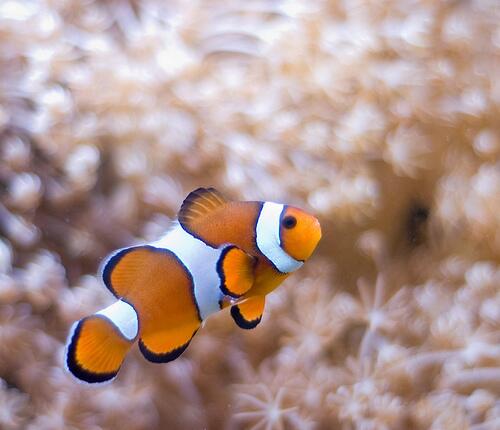
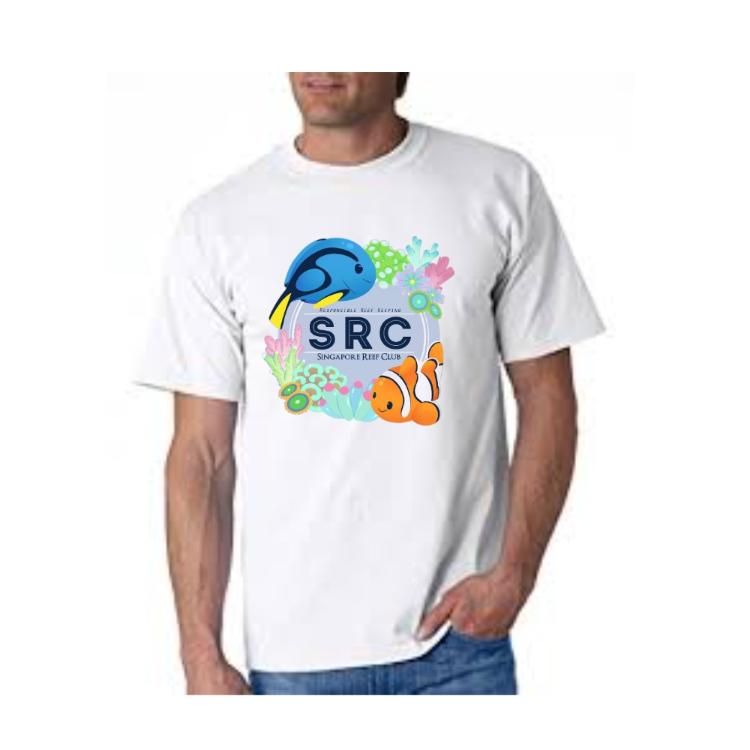

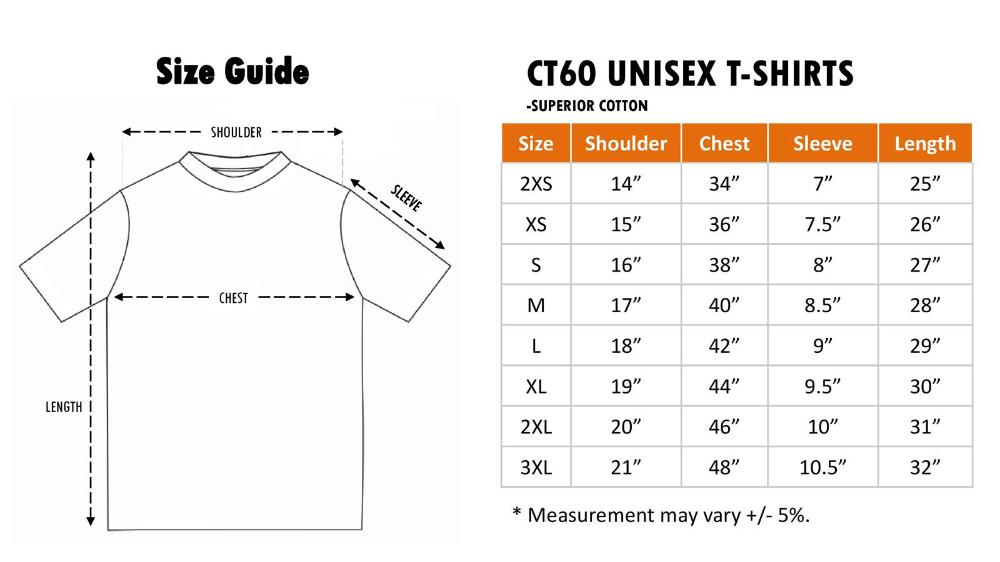
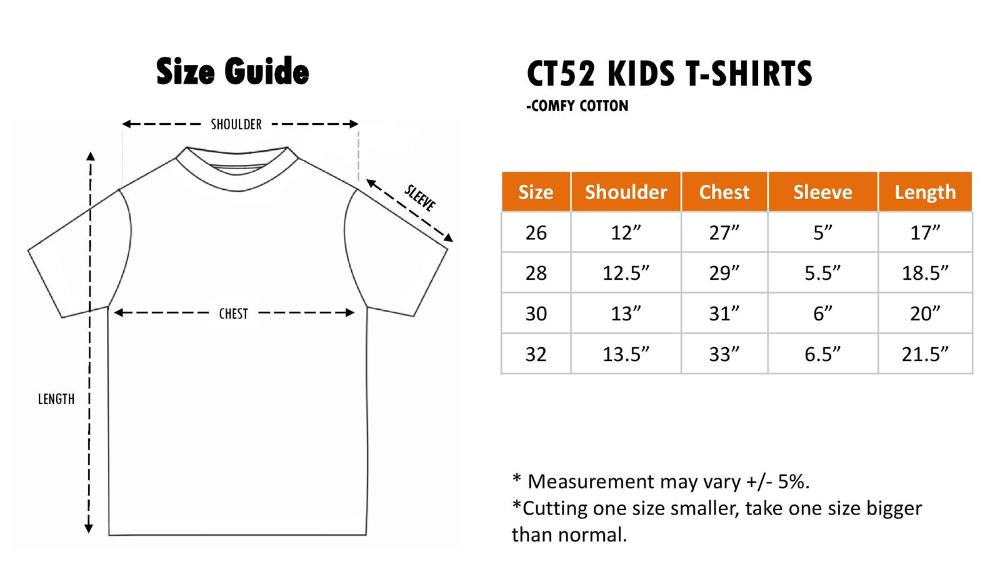
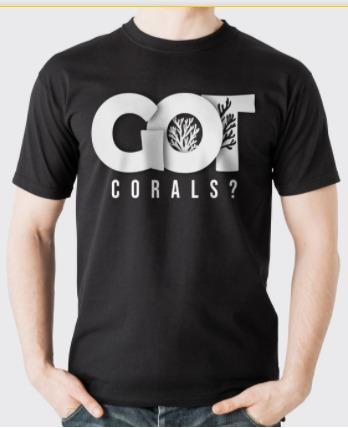
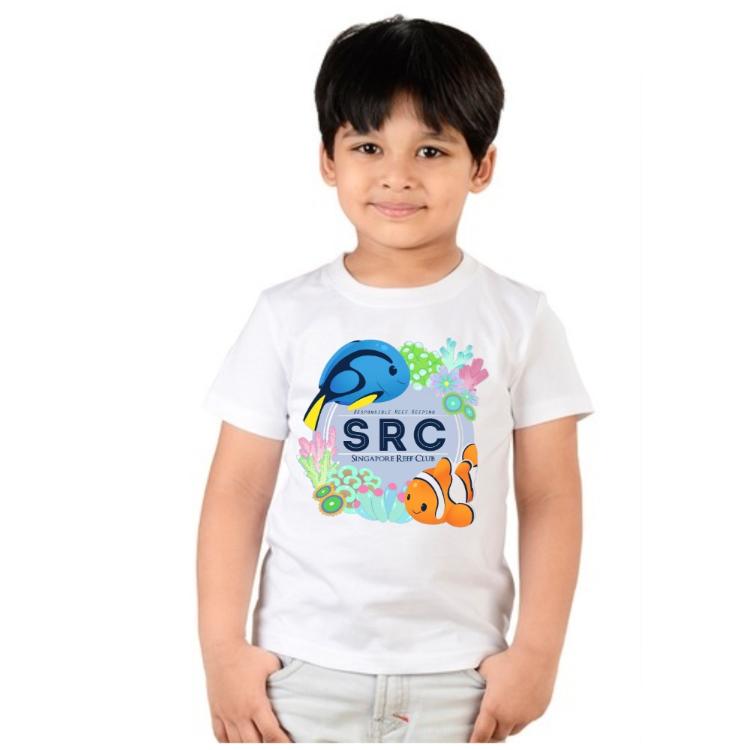
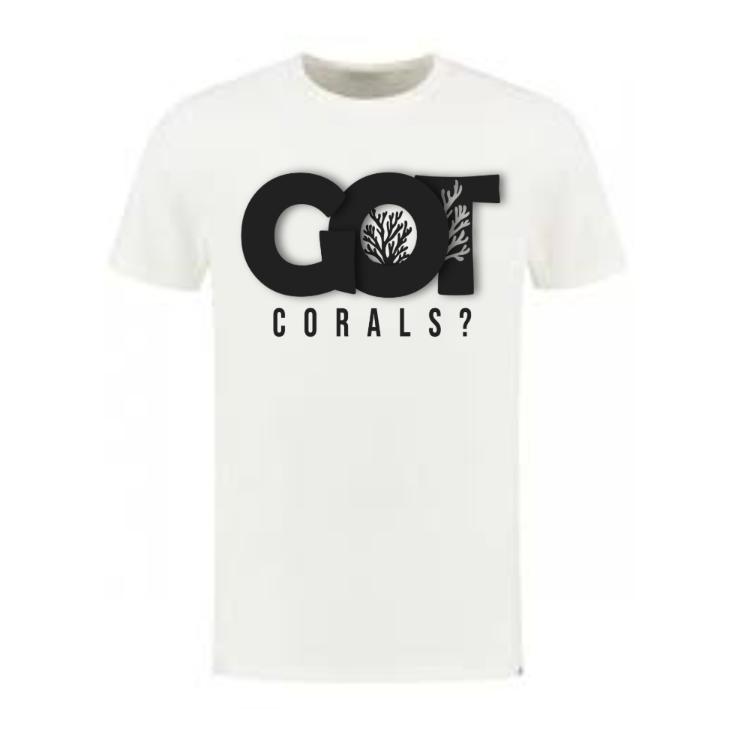
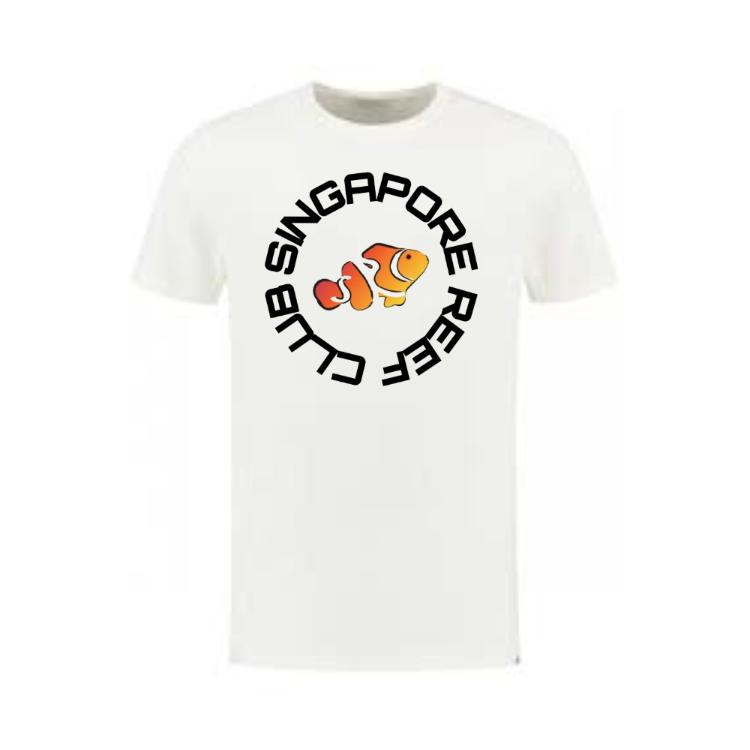
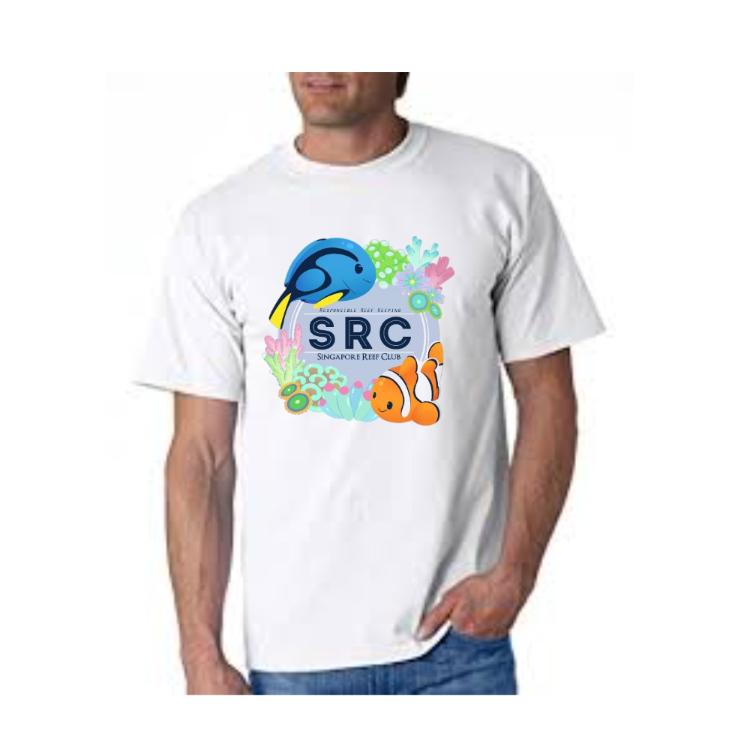
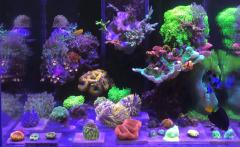
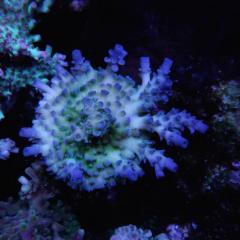
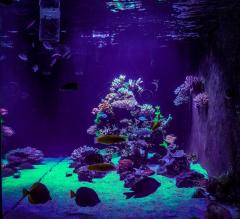
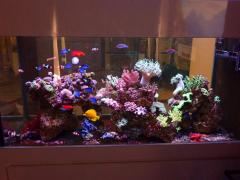
.jpg.fd8a0c9d8bf23b4d9fda57cdaf6043ba.jpg)
